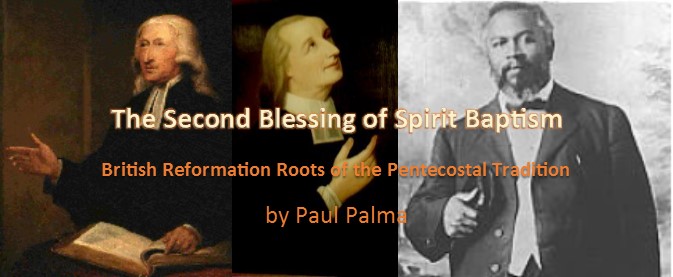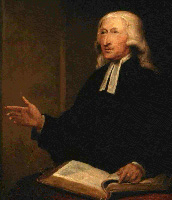The Second Blessing of Spirit Baptism: British Reformation Roots of the Pentecostal Tradition
 The belief that Christian conversion was followed by a “second blessing” experience originated with eighteenth century Anglican priest and founder of Methodism, John Wesley. As elaborated by Wesley and his associate, the English divine and apologist John Fletcher, this belief laid down much of the theological agenda for the nineteenth-century Holiness movement and the twentieth-century advent of Pentecostalism. Indeed, the reality of a further blessing of the fullness of the Christian life subsequent to conversion provided a theological context for the development of the Pentecostal “baptism in the Spirit.”
The belief that Christian conversion was followed by a “second blessing” experience originated with eighteenth century Anglican priest and founder of Methodism, John Wesley. As elaborated by Wesley and his associate, the English divine and apologist John Fletcher, this belief laid down much of the theological agenda for the nineteenth-century Holiness movement and the twentieth-century advent of Pentecostalism. Indeed, the reality of a further blessing of the fullness of the Christian life subsequent to conversion provided a theological context for the development of the Pentecostal “baptism in the Spirit.”

John Wesley
Wesley called attention to the inward, experiential dimension of faith. This emphasis was in part a reaction to the Calvinism that permeated the social and political life of the English world in the seventeenth century. Also undergirding the movement was the “living faith” Wesley imbibed from his encounter with German Pietism. Wesley’s contact with the Moravians, Pietists within eighteenth-century Lutheranism that drew from Catholic mysticism, gave him an awareness for the emotional dimension of faith. This led to his personal conversion, during which as he described, “I felt my heart strangely warmed.”[1] Wesley understood the Christian life as consisting of two separate experiences of grace—conversion (or justification), and Christian perfection (or sanctification). The first, justifying grace, covered over all the “actual sin” one had committed. Sanctifying grace, on the other hand, was given for the “residue” of sin that remained after one became a Christian—the inherited (original sin) from Adam.[2] According to Wesley, sanctifying grace occurred subsequent to the justifying grace of conversion. Wesley refers to the reality of this subsequent sanctifying experience as “Christian perfection,” “perfect love,” and “heart purity.”[3] While this experience is gradual and works itself out over the entirety of the Christian life, as Peter Althouse explains, there is also an instantaneous dimension of sanctification for Wesley. It is this latter “crisis” sense that undergirds the Holiness view of sanctification and the Pentecostal baptism in the Spirit.[4]
Come, Holy Ghost, my heart inspire!
attest that I am born again;
come, and baptize me now with fire.
—Charles Wesley
Category: Church History, Winter 2018


